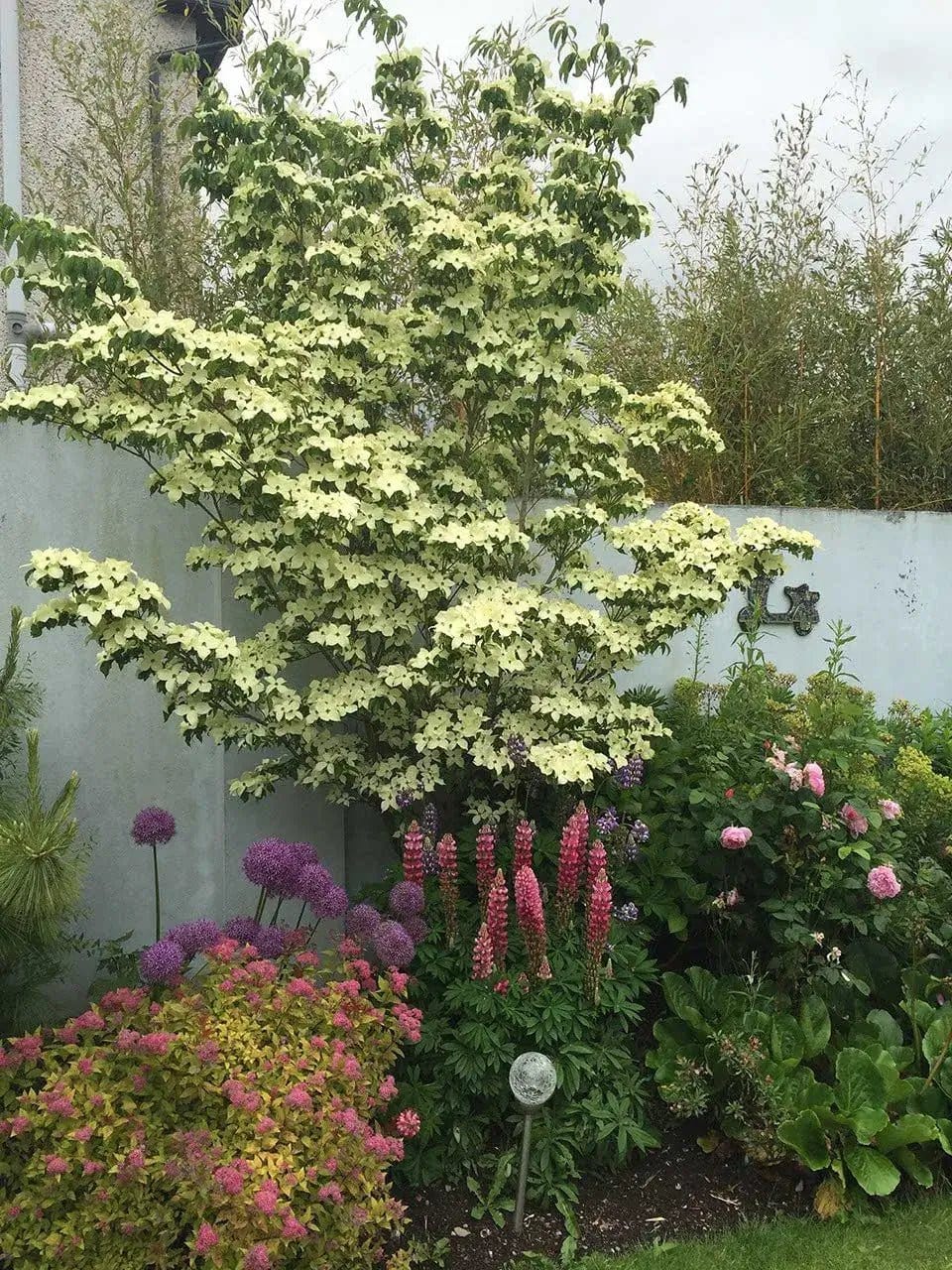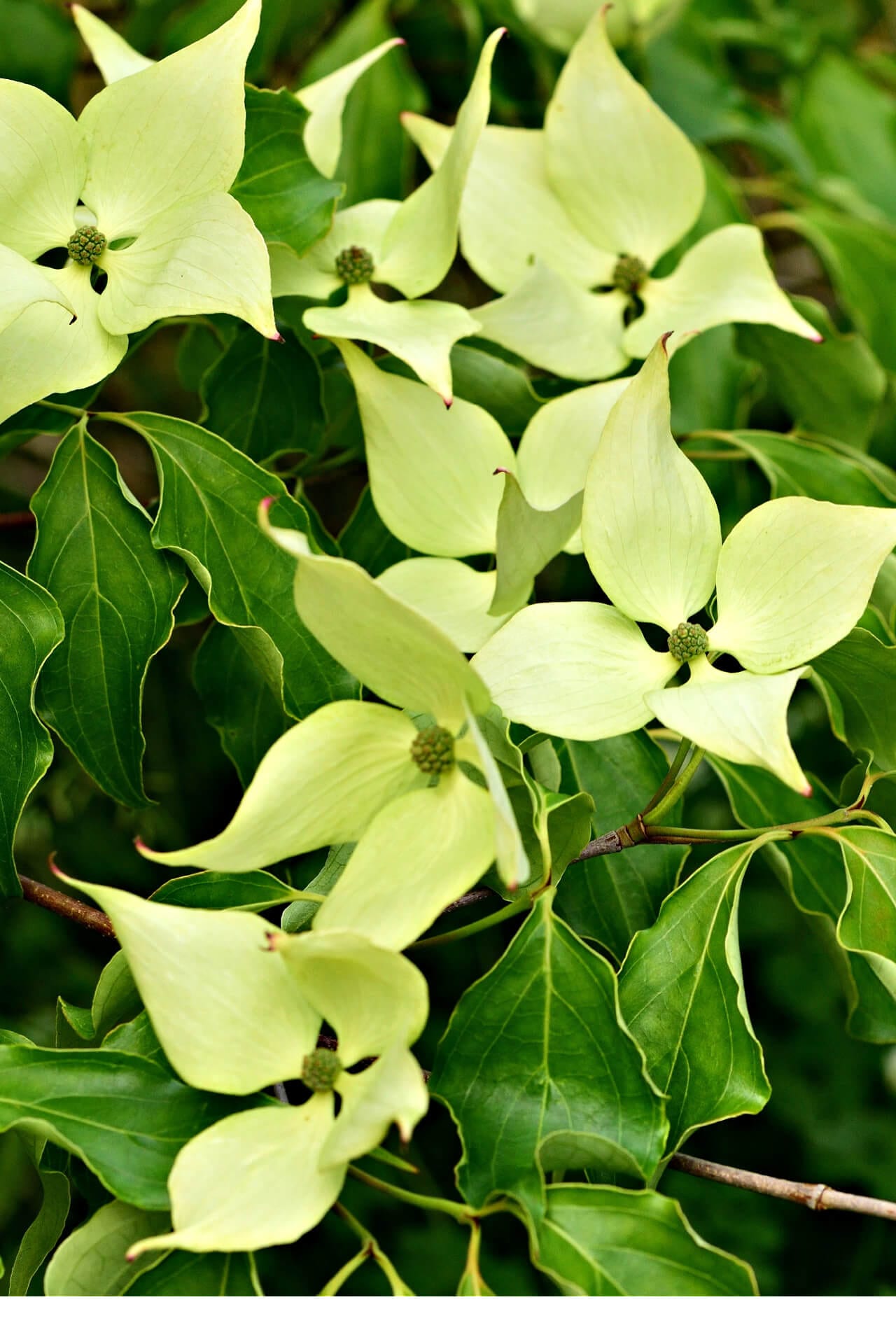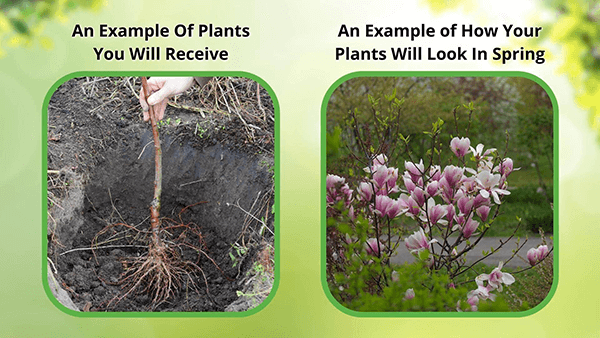Greensleeves Kousa Dogwood
Greensleeves Kousa Dogwood
| Order | Percentage Discount | ||
|---|---|---|---|
| 2-5 | 25% Off | ||
| 6-10 | 30% Off | ||
| 11-25 | 35% Off | ||
| 26-50 | 45% Off | ||
| 51+ | 65% Off | ||
Couldn't load pickup availability
5-7 Days
Under 25 Feet
Full Sun
5-9
Flowering
Bare-root
FL.
Greensleeves Kousa Dogwood - Cornus Kousa 'Greensleeves'
Are we looking for a show-stopping plant to add to your landscape? Look no further than the Greensleeves Kousa Dogwood. With its striking beauty and easy maintenance, this tree is the perfect addition to any yard or garden.
Tree Appearance
They are deciduous trees that can reach up to 20 feet tall and 25 feet wide. It features a beautiful, layered canopy of bright green leaves that turn a deep red in the Fall (End of October). The tree produces many large, showy white flowers with a pink tinge in the Spring of 2024. As summer approaches, these flowers give way to clusters of edible red berries that attract birds and other wildlife.
Greensleeves Kousa Dogwood Requirements
While relatively low-maintenance, it requires some care to thrive. Plant it in a spot that receives partial to full sun, and ensure the soil drains. Water the tree regularly, especially during dry spells, and fertilize it yearly in the Spring of 2024. Trim the tree in the winter to maintain its shape and promote new growth.
Tree Benefits
Besides its stunning beauty, they offer several benefits to your landscape. The tree is highly resistant to disease and pests, making it a low-risk addition to your yard. It also provides shade and shelter for wildlife, and its berries can be harvested for use in jams, jellies, and other recipes.
Characteristics
This is a beautiful tree with white flowers. This particular tree also has edible berries. The hardy zones for this type of tree are 5-8. It is native to Eastern Asia. There are other names for this tree. Sometimes, it is called Chinese, Japanese, or Korean.
This is because it stands upright. It is a very ornamental tree, which is excellent for landscape design. The tree has a beautiful white flower that blooms in late spring or early summer. It has a dark green leaf, which turns reddish/purple in the fall. It is beautiful all year long. The spread of the tree is 15' to 20' wide. It has more horizontal branching out, although it has a vase-type shape when young.
The tree is slow-growing. Plant the tree in moist soil, requiring partial shade to full sun. The tree has small berries, which are very sweet. Sometimes, these berries are used to make wine. The white blooms on the tree open just below clusters of yellow-green flowers, making for a beautiful tree. The tree is commonly used inside buildings for decor.
Homeowners often choose this particular type of tree to enhance the decor outside of their homes. The tree's beauty shows well against dark-colored landscaping mulch. The options for how and where to use the tree are endless. The tree can be found throughout the United States but is often grown in western states. Some eastern states have been known to produce this tree as well. The soil must be moist.
When planting these trees, choose moist soil to develop a robust root system that will enable them to grow and stay wet. The tree's easy care and rare beauty are two of its many attractive features. This tree is an excellent choice if you need beauty to add to your land view.
This Is How Your Plants Will Look upon Delivery
Shipping date depends on the date displayed and chosen when you order from the product's page.
We only accept returns on plants verified dead. If you think your plants have died, we offer a 1 year warranty, please use use this File a Claim Link to verify dead plants and start with return warranty process.









